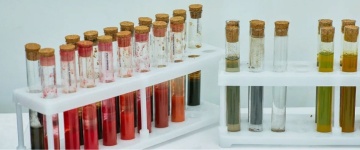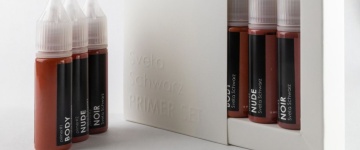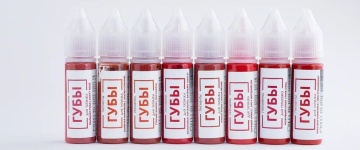Brown Pigments of World Famous pigments
In our work, we periodically encounter tattoo artists who also do permanent makeup. These people are a little less worried about inks and choose brown shades from manufacturers they already know. And those PMU artists who follow us asked the same question more than once: “What does the blue colorant do in brown colors?”
This article will focus on brown colors by World Famous, namely those colors that contain the component CI 74160 (Pigment Blue 15). And also about the fears and delusions of the PMU artists about the fact that eyebrows made with such inks can turn blue or, for example, that this component somehow affects laser removal.
We downloaded the Safety Data Sheets (SDS) of all the inks that this company currently produces on WF website. For those who are not in the know, this information is publicly available, this is not secret.
The SDS contains a description of the ink and its complete composition with CI, CAS, EC numbers. The presented SDS are relevant for 2019. Something could have changed in the composition during this time, but we will be dealing with what we have.
After comparing the palette with SDS, we found 13 brown colors that contain a blue pigment:
Cool Peach, Dark Chocolate, Dark Milk, Dark Tan, Grand Canyon, JF Brown, King Tut, Mustard, Nutella, Tan Mink, Tobacco Doc, Umber, Warm Milk.
Amount of blue pigment: >1%
There is so little blue pigment in the composition that you can’t see it under every microscope. Imagine a thousandth of a substance in a 15 ml vial. Approximately the same amount (less than 1%) of Pigment Blue 15 is contained in the aforementioned inks.
What's the point of adding it then?
This pigment has a specific purpose: it reduces the brightness of red and orange colorants in the composition. In WF inks these are: CI 12477 (Pigment Red 210) and CI 21110 (Pigment Orange 13). Moreover, a similar method of "dusting" red is also found in pink palettes, which many people use for lip permanent makeup. Nude shades, beloved by all PMU artists, contain blue or black pigment. In addition, it regulates the color temperature of these pink tones. Also, the blue pigment significantly increases the optical density of the finished product. This directly affects the opacity.
Summary: It's simply a production method, neither good nor bad. By the way, earlier manufacturers used red iron oxide for such processes. But the industry is rapidly moving forward towards organic components. And this has a positive effect on PMU.
Why not just add more black?
They do. Brown inks are made for the most part without a blue colorant. Inks with a blue colorant are rather an exception to the rule (remember, there are only 13 colors in an extensive palette).
In the case of lip inks you need to understand one thing: black affects the contrast of the finished product too much, unlike blue. Blue is easier to work with. But black is still found in pink / red colors, this is completely normal, it has its own purpose in these compositions.
Does it affect laser removal?
No. Such amount of this substance cannot affect the removal in any way. The blue color is in the absorption band. Nothing supernatural will happen.
And a solid fact: ink manufacturers do not have the task of making a product that can be easily removed from the skin in one session. They make tattoo ink, and a tattoo, as we know, is there to stay.
Who will work with ink that is "not there to stay"?
Conclusions:
Conclusion #1
The amount of the substance we are discussing only slightly changes the shade of the color. If you create permanent makeup on eyebrows with the aforementioned inks in their pure form, you will end up with regular permanent makeup. Not blue, not cyan. You can use it, but we recommend diluting it.
Conclusion #2
The laser will remove it in the same way as it removes any hybrid inks: the black will absorb the laser energy much more intensively than the other components, it will break down faster, and you will see other components (red / orange) that will also be removed, but under different laser conditions. If removed after a year, it will simply brighten.
Conclusion #3
If you see such a component in the compositions of author's eyebrow mixes, then there are two options: either the finished color is corrected with orange / yellow inks “so that it heals warmer”, or they simply pour the finished color into their own bottles. We can say confidently: no one pours blue inks from a can into their mixes.





